Humanity is clearly on the path to its ultimate tragedy. When a temperate city—where there are more heaters than air conditioners—experiences temperatures nearing those of the equator, it indicates that we are being cooked alive.
Much of the Pacific Northwest is currently trapped in an extreme weather phenomenon that scientists refer to as “heat dome.” It is likened to a pressure cooker, with a high-pressure cap above continuously exerting pressure on the hot air mass below ground.
The heat dome traps hot air inside, preventing winds and clouds from forming, thus stopping any rain that could provide relief. It just sits in place, causing temperatures in the area to continuously rise. Many cities in North America and Western Canada have recorded temperatures breaking records that have stood for decades.
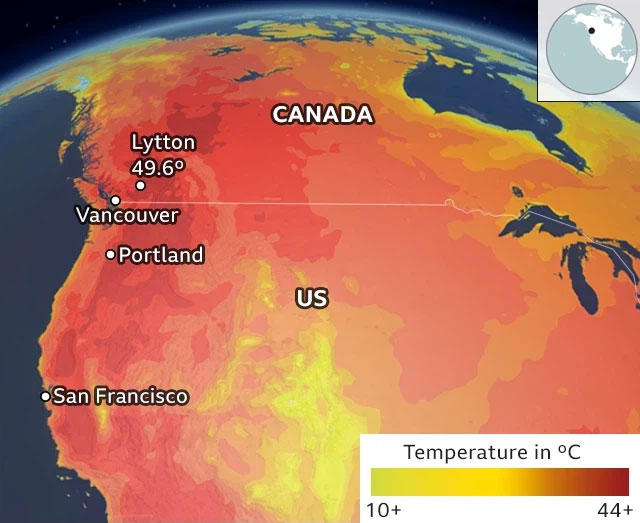
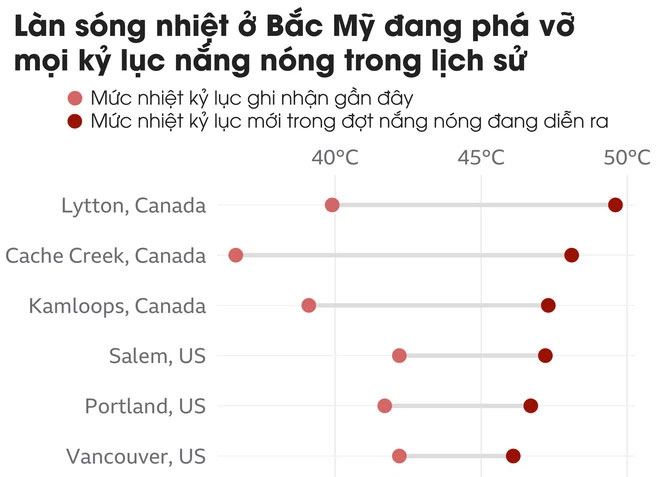
Areas that were once thought to have a temperate climate year-round are now hotter than Cairo, Egypt: Temperatures recorded in British Columbia, Canada, have maintained around 49.6oC for several days. The heat has scorched a town—Lytton—forcing more than 1,000 residents to evacuate.
In other areas, Canadians reported that the heat melted electrical cables, warped asphalt roads, and cracked car windows left outside.
During this same period, Canada’s health agency recorded an unusually high number of deaths over five consecutive days. At least 486 people died during the heatwave, a 195% increase compared to the average on other days.
And this is truly a warning sign of danger. It shows that “heat waves” or short-term heat events have become a thing of the past, giving way to new, longer-lasting, and more catastrophic “heat dome” phenomena.
Life Within Heat Domes
To imagine what life in temperate regions might be like in the future, let’s look at the most extreme tropical areas today. Jacobabad in Pakistan is currently the hottest city in the world, with an average temperature above 52oC.
In comparison, the heat dome in the Pacific Northwest has pushed temperatures there above 46oC. Portland and Seattle, once temperate cities, are now reaching temperatures close to the hottest city on Earth.
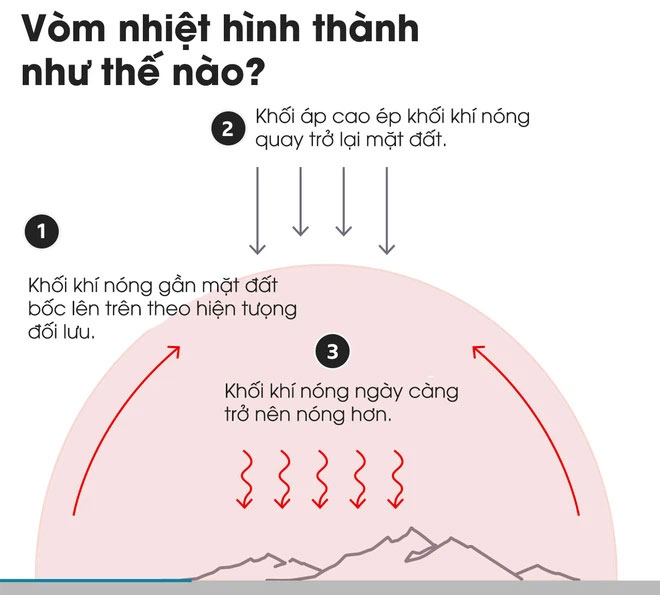
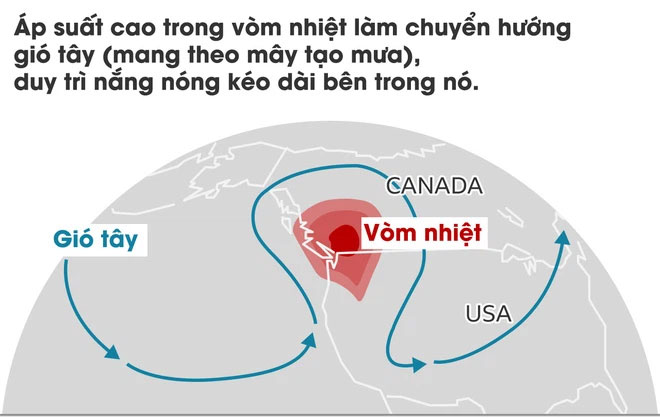
This is a consequence of climate change, or more precisely, global warming. We are all starting to be cooked alive. If you think that sounds exaggerated, consider life in Jacobabad.
In this city, residents are advised not to leave their homes during the record heat days. And they comply, as very few can withstand the heat of 52oC. Business activities, trade, and social events—all of these come to a halt.
Does it sound like a city under lockdown due to Covid-19? Indeed, the extreme heat of the future could resemble a pandemic, as both are disasters on an irretrievable brink.
In Jacobabad, these lockdown days can last for months. The heat dome in the Pacific Northwest may last about two weeks before the high-pressure system dissipates and rain returns.
You might think there’s still a long way to go before Portland or Vancouver becomes like Jacobabad. But the truth is, heat domes could return, and each passing year, they will linger longer and occur more frequently.
So what happens when the Pacific Northwest experiences longer and more frequent heat domes? This is when we need to discuss a concept: “wet bulb temperature.”
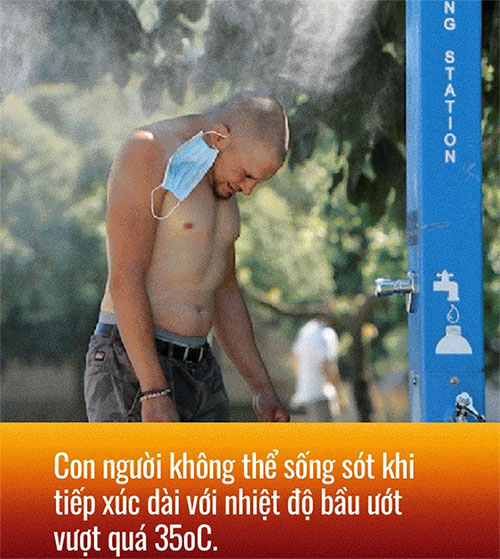
Take a towel and cover a thermometer, and you will get the maximum temperature that the body can cool down through sweating and evaporation. This is the simple way climate scientist Simon Lewis explains the concept of “wet bulb temperature.”
“Humans cannot survive prolonged exposure to wet bulb temperatures exceeding 35oC, as there is no way to cool our bodies down at that temperature—even if you are in the shade and can drink an unlimited amount of water,” Lewis says.
This means if the outdoor temperature is above 35oC and the humidity is 100%, it feels like 70oC. The sweat on your skin cannot evaporate, trapping heat and causing your body temperature to rise.
When body temperature rises from 37oC past 40oC, your blood starts to thicken, and your heart must beat harder and faster to pump blood to the body’s extremities. But at 44oC, it can no longer maintain blood flow. The body will prioritize blood for vital organs, neglecting less critical organs like the kidneys or intestines.
Without blood circulation, your intestines can rupture and leak, creating areas of widespread inflammation. The blood vessels there will be damaged, and blood will clot. Cells can even break down as their proteins are disrupted. Your kidneys will no longer filter blood, and cellular waste will rapidly accumulate, poisoning the body.
Cellular damage due to heat cytotoxicity and ischemia subsequently leads to severe life-threatening conditions such as acute tubular necrosis, permanent brain function loss, hepatic endotoxemia, pancreatitis, and pulmonary endothelial damage.
At this point, all your organs are like a line of dominoes falling down. Soon after, you will die.
Two heatwaves in 2003 in Europe and 2010 in Russia recorded over 125,000 deaths when wet bulb temperatures only reached 28oC.

As of now, wet bulb temperatures have only occurred in a few places and for short durations. For example, on July 8, 2003, the city of Dhahran in Saudi Arabia recorded an outdoor temperature of 81oC and a wet bulb temperature of 42oC.
A heatwave in 2015 in India saw wet bulb temperatures in Andhra Pradesh exceed 30oC. That same year, two cities in Iraq and Iran also recorded wet bulb temperatures of 33.5oC.
However, as the Earth continues to warm, we will increasingly witness hotter, longer summers with periods of dangerously high wet-bulb temperatures. Let’s look at the current situation in Portland, Vancouver, and the Pacific Northwest.
“If the weather warms up, to a certain extent it will reach a frightening temperature threshold that does not support life or existence,” Lewis said.
Our Planet is Gradually Being Cooked
Now you might think that dealing with wet-bulb temperatures is just like coping with regular heat. “Don’t I just need to install more air conditioning?” Well, the truth is not that simple. Air conditioning only works well when humidity levels are low. The more humid it gets, the harder they have to work.
Moreover, in a world where everyone is installing air conditioning, our electrical systems are sure to face stress. Not to mention that extreme heat waves often cause power lines to melt, transformers to catch fire, and frequently lead to power outages – as is currently happening in Jacobabad, Portland, or Vancouver.
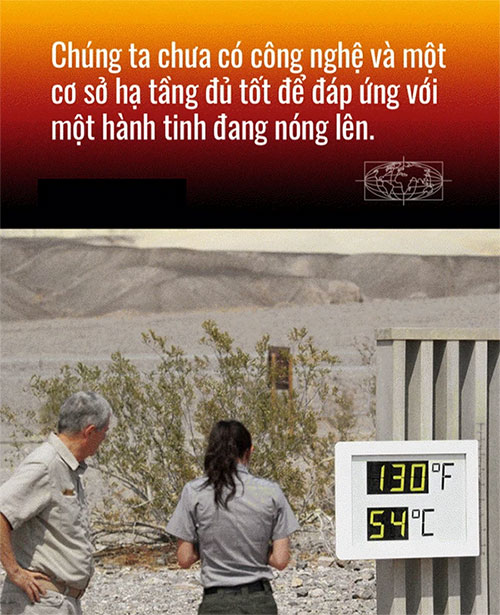
Many residents in North America are seeking refuge in cooling centers like this.
The reality is that we do not yet have the technology and infrastructure to cope with a warming planet. Lewis warns that in some cities like Jacobabad, heat waves will become increasingly frequent, making them uninhabitable. So what happens next?
There have already been waves of people fleeing Jacobabad, not just the poor and homeless, but also those with wealth and property. But like in a war refugee situation, you cannot sell your house when it is located in a conflict zone. A house in Jacobabad would lose all liquidity if the city becomes unlivable.
Refugees might only have the clothes on their backs, a little cash, and at most a small van. If neighboring areas do not have policies to accept these citizens – which most will likely not want to do – a wave of social unrest will emerge.
This may not sound like a scenario that could happen in developed countries like the U.S. and Canada today. But is it really possible?
Consider the super droughts that the western United States has faced in recent years. Currently, most people pretend that it is not a significant issue. Droughts come and go, then the rains return, nourishing the land and cooling things down.
But what if the rains do not come in the future?
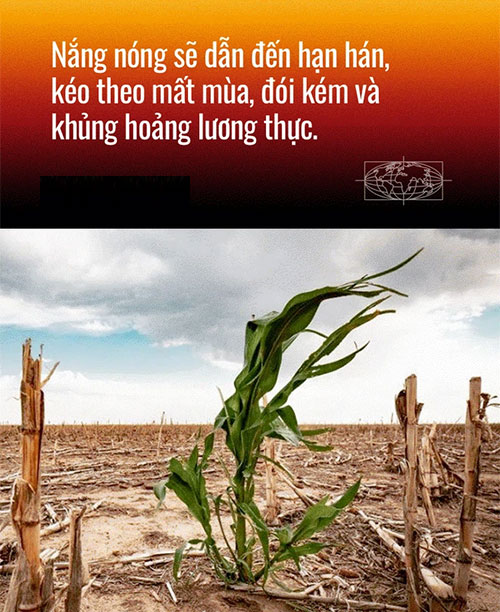
First, rural areas will be the hardest hit. Drought leads to crop failures, famine, and food crises. This wave will push migrants into cities. Here, they will compete for jobs, driving labor prices down to a level that is not enough to sustain their own lives.
And once the food crisis begins, such as the major drought in the West that is turning California’s agricultural valleys from lush to barren, it will gradually spread eastward like a cancer.
Then what? New waves of refugees will emerge. Climate refugees? We don’t even have a term for them, those fleeing extreme heat, water shortages, and food scarcity.
A warming planet is a dying planet. The Earth is literally dying, as the Sun expands, one day turning our planet into a desert like Venus. But we are also heating ourselves faster with an industry that emits greenhouse gases.
We, this generation, will not live to see the Sun become a red giant. But many living today may live long enough to witness a 3oC increase by the end of the century. The Earth is warming extremely fast, perhaps faster than at any point in its history.
Species that cannot adapt to the new temperatures will die. Many species will perish, billions of them. Trees, insects, animals, fish… Streams will dry up, rivers will run dry, and oceans will become salt flats. Humanity will ultimately share the same fate.
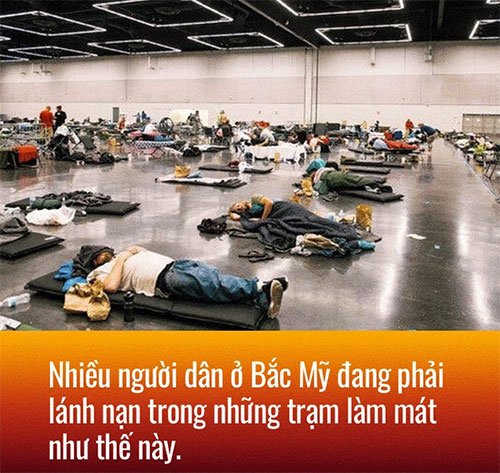
It is clear that humanity will not be able to survive if we continue our current way of life. We cannot use technology to combat the threats that are right at our doorstep.
You cannot turn on the air conditioning to stop climate change. We also cannot use our existing cultural traits, values, norms, and institutions to combat materialism, greed, selfishness, and indifference.
Humanity is clearly on the path to its own ultimate tragedy. When a temperate city with more heaters than air conditioners has to witness temperatures nearly as hot as the equator, it shows that we are being cooked.
The heat dome in the Pacific Northwest is not just a heat wave; it is a sign that the planet is slowly dying.



















































